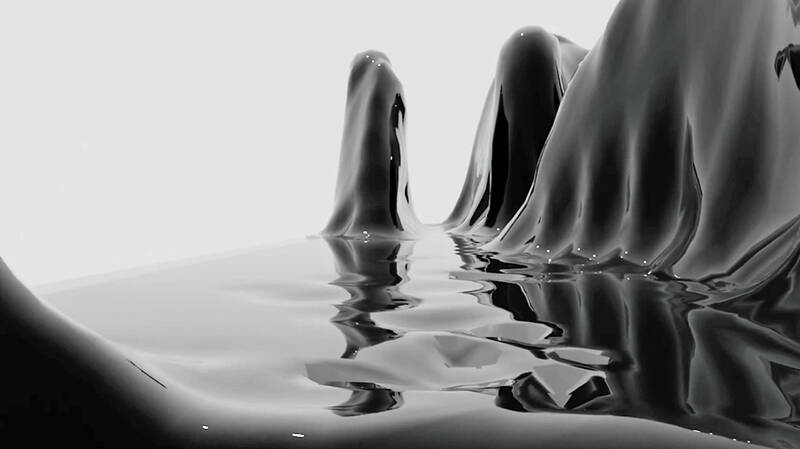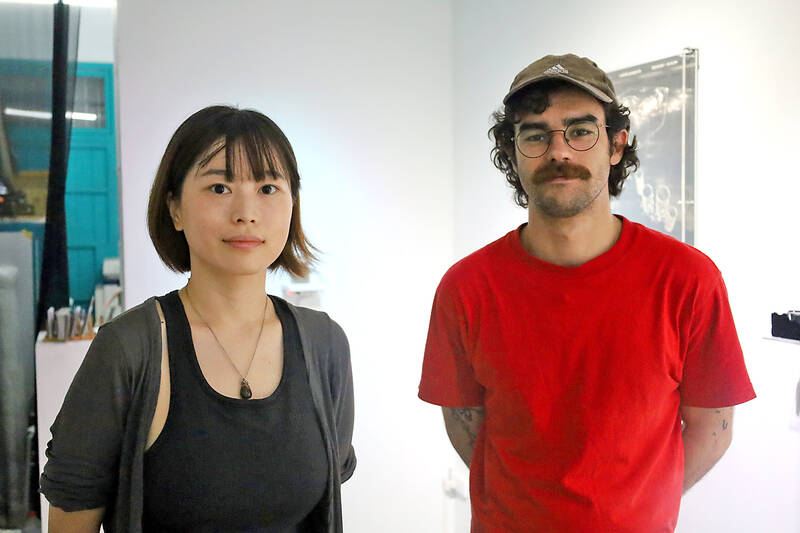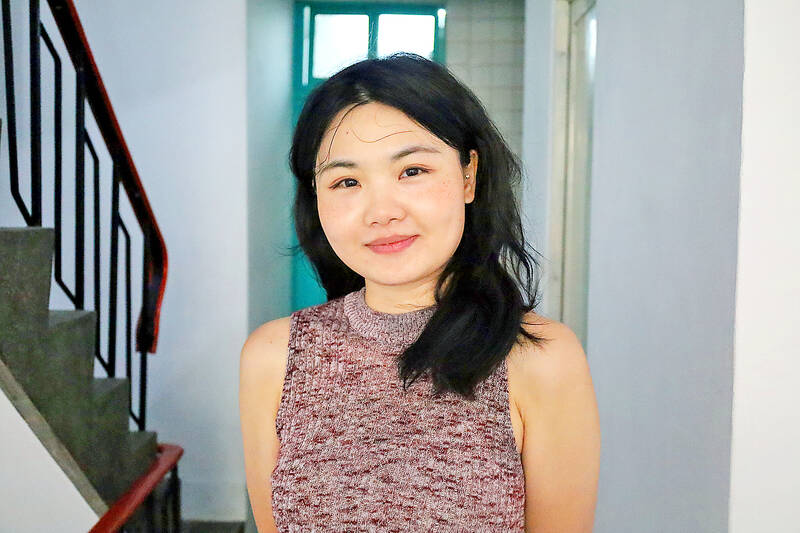Stepping inside Waley Art (水谷藝術) in Taipei’s historic Wanhua District (萬華區) one leaves the motorcycle growl and air-conditioner purr of the street and enters a very different sonic realm.
Speakers hiss, machines whir and objects chime from all five floors of the shophouse-turned- contemporary art gallery (including the basement).
“It’s a bit of a metaphor, the stacking of gallery floors is like the layering of sounds,” observes Australian conceptual artist Samuel Beilby, whose audio installation HZ & Machinic Paragenesis occupies the ground floor of the gallery space.

Photo courtesy of Samuel Beilby
He’s not wrong.
Put ‘em in a Box (我們把它都裝在一個盒子裡), which runs until Aug. 18, invites gallery-goers to “think outside the box” with an eclectic array of multi-media installations that explore human relationships with sound.
This brain-expanding exhibition is the brainchild of curator Shih Ya-tien (施雅恬), from Tainan, who says it took her a full year to put the whole project together.

Photo: Thomas Bird, Taipei Times
“The artists are all from different cities, from Helsinki to Perth, but we are all very interested in using sound as the material to make our work,” she says. “We’ve been sharing recordings on a Google Drive.”
Shih says she chose Waley Art to bring her disparate band of sound sculptors together because it’s one of Taipei’s “more experimental spaces” that “welcomes all kinds of novel experiences.”
SCULPTORS OF SOUND

Photo courtesy of Waley Art
Shih says she views cities as “vast containers, encompassing the chirps of birds, barks of dogs,” as well as “the noises of traffic and construction sites.”
Humans have invented devices for the production and reproduction of sound and these devices “act as containers, which facilitate the reception and circulation of intricate, mundane secrets.”
These so-called “containers” are the focus of the exhibition.

Photo courtesy of Waley Art
The talents of five artists, Chi Po-hao (紀柏豪), Chloe Lin (林雨儂), Sarah Song (宋夏然), Samuel Beilby and Elico Suzuki are employed to investigate sound through their respective creative practices.
The results are as varied as they are unique.
“I went to three automated warehouses in Taiwan,” explains Beilby, “and recorded the electromagnetic frequencies on some microphones, ethereal sounds that you can’t ordinarily hear.”

Photo: Thomas Bird, Taipei Times
The robotic noises he captured can be listened to via headphones stationed on the gallery wall next to physical representations of the sounds.
“The sculptures are generated from audio. And the maps map-out my methodology — where I went to grab invisible sounds.”
On the second floor, Tokyo-based sound artist Elico Suzuki has created a startling array of self-made instruments exploring ecological and social themes.

Photo: Thomas Bird, Taipei Times
These include the mixed media object For The Birds whereby a small monitor is attached to a toy piano by a home-made circuit.
Each time a bird takes flight on the monitor screen, it triggers a sensor, which plays a note on the piano.
On the fourth floor, there’s a giant, transparent ball called We Made Sound in a Box (我們在盒子裡發聲音), which amplifies exclamations like “aha.”
It is the creation of Taipei-based creative Chloe Lin who began her sonic journey as a student of classical music at National Taiwan Normal University.
“My instrument is the pipa,” she says of the pear-shaped string-instrument sometimes referred to as a Chinese lute.
Lin started to experiment with improvisation and dance while in Taipei but it wasn’t until she enrolled in a Master’s degree program at the School of the Art Institute of Chicago that she says her audio palette broadened to incorporate different sound textures and approaches.
The result is a visually and audibly arresting creation.
“I collected all different kinds of meaningless sounds from different languages, Japanese, Chinese and English, male or female. I even got AI to mimic a human voice.”
She says that people use sound to express an emotion or momentary feeling. It was these “pure notes” that she collected to make her composition.

In the March 9 edition of the Taipei Times a piece by Ninon Godefroy ran with the headine “The quiet, gentle rhythm of Taiwan.” It started with the line “Taiwan is a small, humble place. There is no Eiffel Tower, no pyramids — no singular attraction that draws the world’s attention.” I laughed out loud at that. This was out of no disrespect for the author or the piece, which made some interesting analogies and good points about how both Din Tai Fung’s and Taiwan Semiconductor Manufacturing Co’s (TSMC, 台積電) meticulous attention to detail and quality are not quite up to

April 21 to April 27 Hsieh Er’s (謝娥) political fortunes were rising fast after she got out of jail and joined the Chinese Nationalist Party (KMT) in December 1945. Not only did she hold key positions in various committees, she was elected the only woman on the Taipei City Council and headed to Nanjing in 1946 as the sole Taiwanese female representative to the National Constituent Assembly. With the support of first lady Soong May-ling (宋美齡), she started the Taipei Women’s Association and Taiwan Provincial Women’s Association, where she

Chinese Nationalist Party (KMT) Chairman Eric Chu (朱立倫) hatched a bold plan to charge forward and seize the initiative when he held a protest in front of the Taipei City Prosecutors’ Office. Though risky, because illegal, its success would help tackle at least six problems facing both himself and the KMT. What he did not see coming was Taipei Mayor Chiang Wan-an (將萬安) tripping him up out of the gate. In spite of Chu being the most consequential and successful KMT chairman since the early 2010s — arguably saving the party from financial ruin and restoring its electoral viability —

It is one of the more remarkable facts of Taiwan history that it was never occupied or claimed by any of the numerous kingdoms of southern China — Han or otherwise — that lay just across the water from it. None of their brilliant ministers ever discovered that Taiwan was a “core interest” of the state whose annexation was “inevitable.” As Paul Kua notes in an excellent monograph laying out how the Portuguese gave Taiwan the name “Formosa,” the first Europeans to express an interest in occupying Taiwan were the Spanish. Tonio Andrade in his seminal work, How Taiwan Became Chinese,